The garden of Midsummer House: An Oxfordshire gem that's small but perfectly formed
With a stream running through it and views of the Uffington White Horse, the garden of Midsummer House in Oxfordshire — the home of Mrs Penny Spink — is a garden of great natural beauty cleverly designed and planted to make it seem much larger than it actually is. George Plumptre paid a visit; photographs by Mimi Connolly.
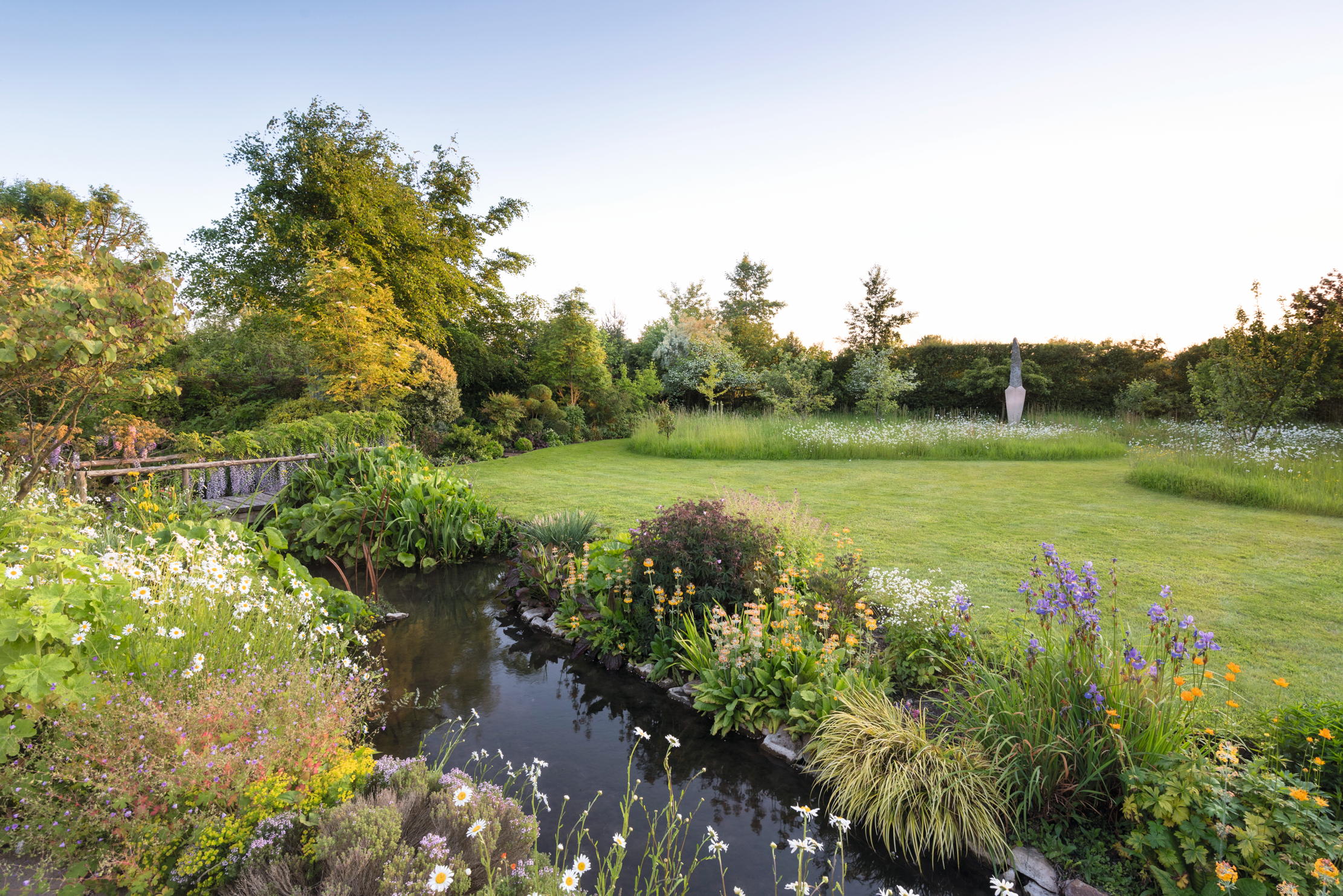
The first thing you notice about Penny Spink’s garden at Midsummer House is its ebullience. As do many of the best gardens, it reflects the character of its owner and celebrates plants in a joyous, artistic manner. It also demonstrates the enjoyment that can come from the centuries-old tradition of naming plants after people. As you walk around, Mrs Spink will point and remark: ‘Look at “Phyllis Bide” next to Princess Margareta of Denmark, she’s pretty but very prickly… I love “Corning”, she’s so delicate’ and other such asides. The second thing you notice is how immediately the garden wraps around the house like a secure embrace.
But Midsummer House is not only about plants. It has a stupendous view. It is great good fortune to create a garden with a view to one of England’s most famous sights; to be able to create two gardens with that view is a blessing. In the 1970s, Mrs Spink and her late husband, the distinguished and much-loved art dealer Anthony, bought the Mill House in the tiny village of Woolstone, which nestles beneath the rolling chalk upland of White Horse Hill. They created the garden of their new home around the view up to the magical, prehistoric figure of the Uffington White Horse, etched into the chalk some 3,000 years ago, a vision captured memorably by the artist Eric Ravilious, whom Anthony so admired.
In 2014, Anthony’s declining health prompted a decision to move and, as luck would have it, Midsummer House, 200 yards along the village lane, was for sale. They moved in the following year and were able to start planning the garden together before Anthony’s death in 2019. At less than an acre, the new garden was much smaller than the one they had just left, but one of the great achievements here has been the introduction, in small scale, of areas of different character that flow together, giving a balance of rich planting and open space that ensures the garden feels more spacious than it is.
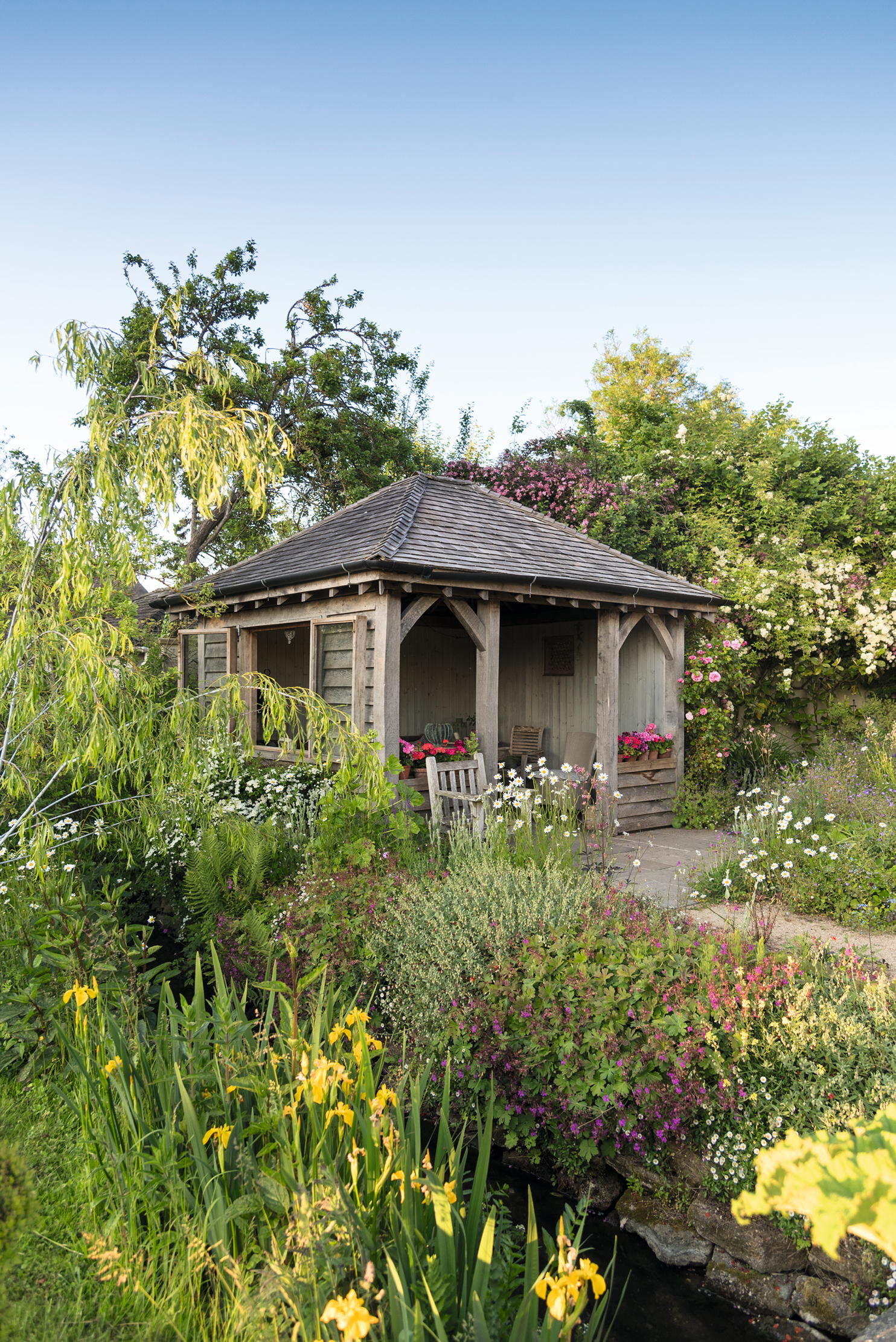
Help also came from a second priceless natural feature: the crystal-clear stream that flows through the garden from south to north as it winds its way through the village. This encouraged dense planting along the waterside banks and in the small area outside the south-facing front door, with open grass stretching from the stream to the western boundary, where the Spinks planted a traditional mixed hedge. Leaving the grass to grow as a meadow was the direct result of the garden’s first new addition — Ascent, a piece in Cornish granite and stainless steel by Johannes von Stumm.
When the Spinks moved to Midsummer House, their son, Justin, and his family took over Mill House. He is a successful garden designer, perhaps no surprise considering that his great-grandfather was Thomas Mawson, one of the most influential garden designers of the late 19th and early 20th centuries. As Mrs Spink said to me: ‘Anthony and Justin definitely inherited the gardening gene.’ Mr Spink has made selected, but decisive contributions to his parents’ new garden: designing the small parterre facing the front door and the cool, simple, wooden summerhouse against the garden’s north side. He also mapped out the pattern of meadow and curving mown paths in the area around Ascent. Anthony suggested the fruit trees and, now, in early summer, ox-eye daisies and Geranium ‘Johnson’s Blue’ are scattered beneath them through the long grass.
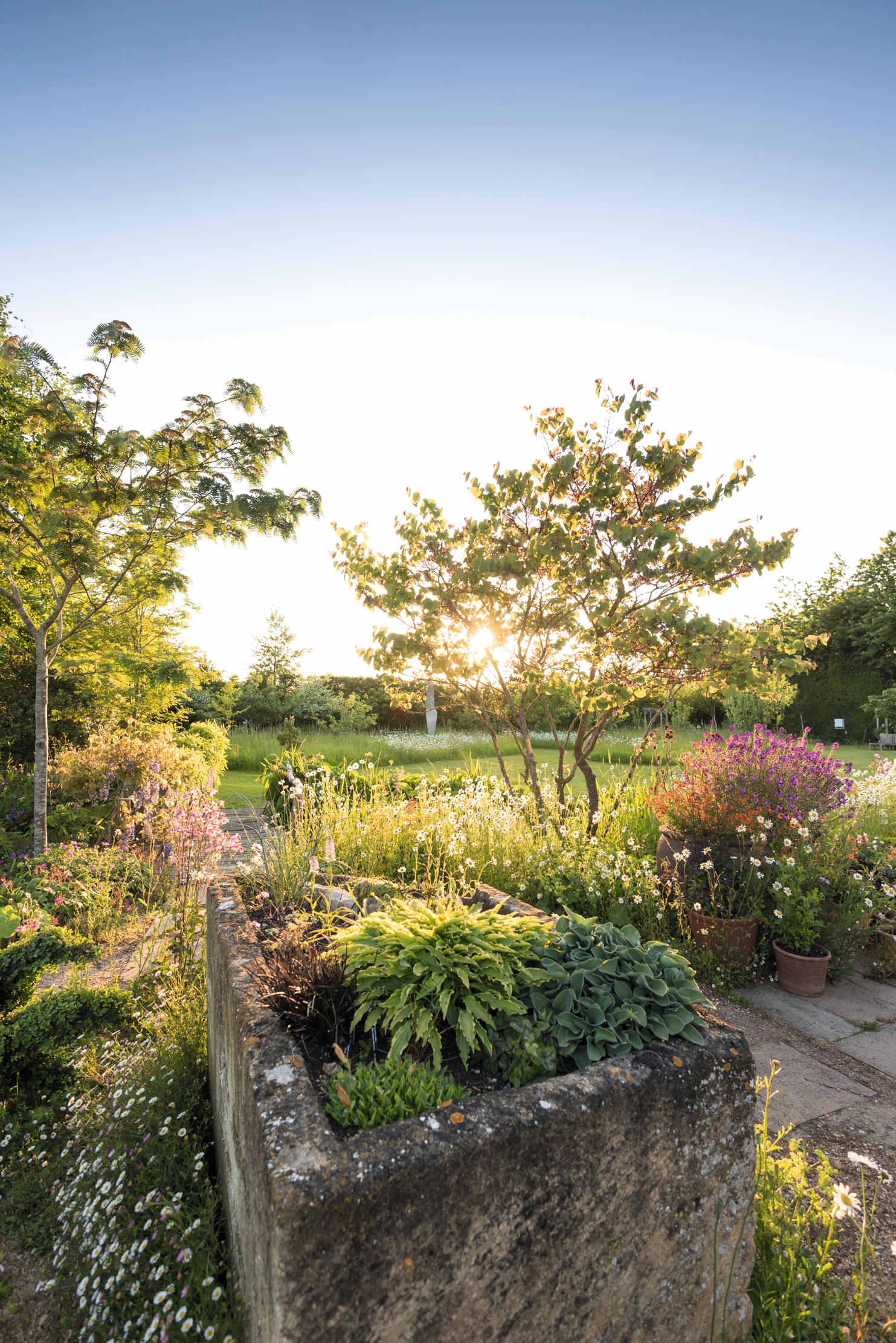
The parterre designed by Mr Spink was inspired by one his parents had seen at Herterton House in Northumberland. He dug up the existing blue clay, replaced it with better soil and set out the small pattern of paths and planted areas with box hedges, four columnar Irish yews, staddle stones and a sundial to give structure. Next to the parterre is one of the features that make the garden so characterful — a collection of box topiary figures clipped into sea creatures, all arising from billowing erigeron.
Mrs Spink is helped by expert gardeners Mike and Ann Collins, who have made significant contributions. Mr Collins added the second flat-stone bridge across the stream and transformed its impact by putting a line of rocks across in one place, so the water constantly gurgles, rather than simply flowing quietly by. He also suggested and planted the woodland garden in the shaded south-west corner. This is one of Midsummer House’s brilliant areas in miniature, where a shady path leads past a succession of small woodland treasures: lots of ferns, including a little disporopsis and a larger Athyrium ‘Dre’s Dagger’, rare roscoas, pyramid orchids and Martagon lilies, tiny pink lily of the valley and an unusual climbing aconitum.
Sign up for the Country Life Newsletter
Exquisite houses, the beauty of Nature, and how to get the most from your life, straight to your inbox.
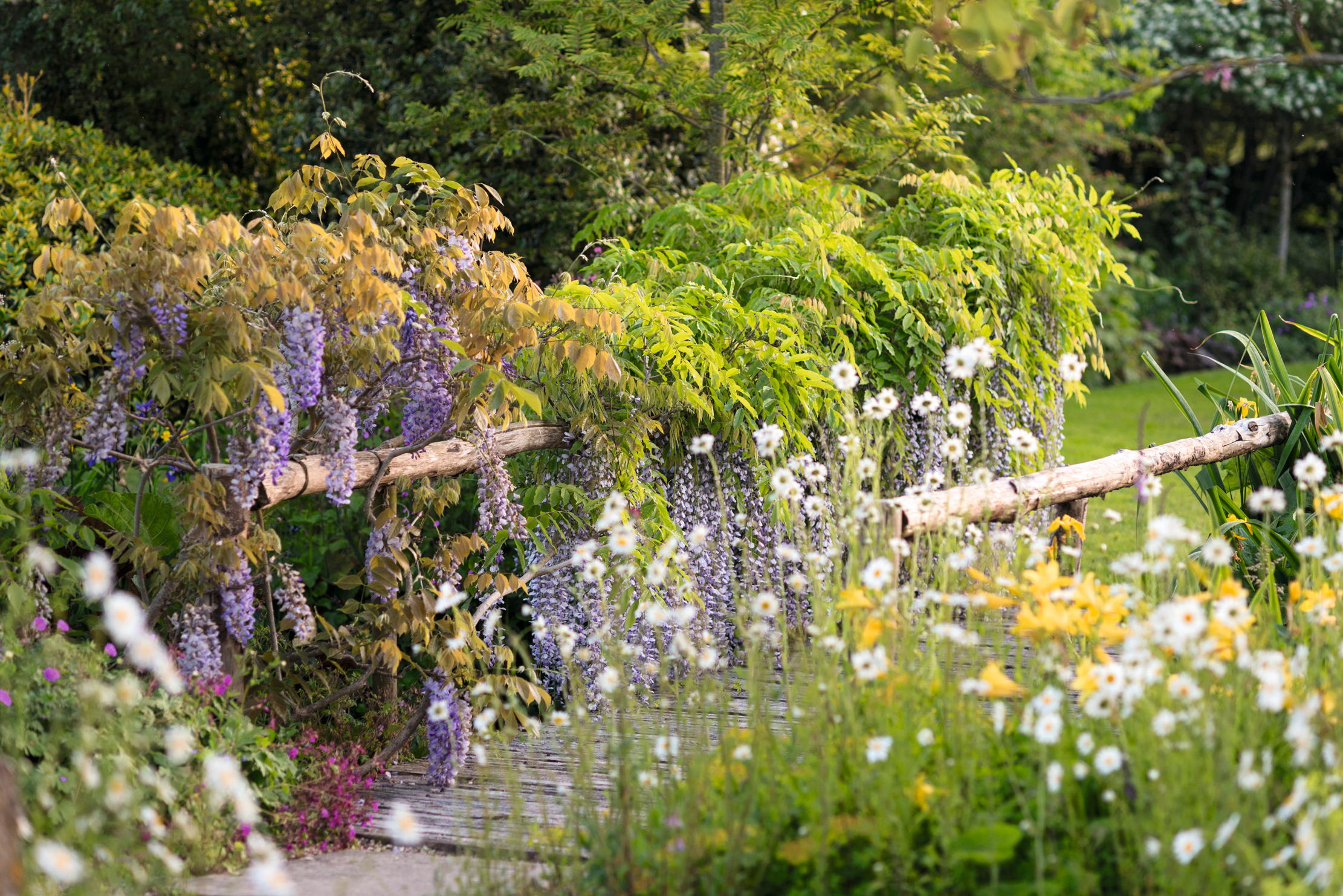
In the opposite corner is the similarly small-scale white garden, planned around a stand of Betula jacquemontii chosen by Anthony and including a flowering succession that starts with choice snowdrops named after famous galanthophiles and continues through a summer medley of thalictrums, alliums, lilies, veronica and Silene fimbriata. The plant associations here may be monochrome, but they are a good example of what you find everywhere.
Along the stream runs a constantly shifting kaleidoscope of foliage textures and flowers: bright Geum ‘Totally Tangerine’, candelabra primulas and hanging drifts of erigeron, Euphorbia griffithii, Geranium ‘Marsh Mallow’ and huge gunnera. Luxuriant roses ‘Tuscany Superb’ and the amazing red ‘La Sevillana’ pick up the colour, together with purple knautias and yellow Thalictrum ‘Illuminator’. Alpine treasures, including Sisyrinchium ‘Biscutella’ and Geranium ‘Fran’, fill the large stone trough, with dazzling purple and orange wallflowers in adjacent pots.
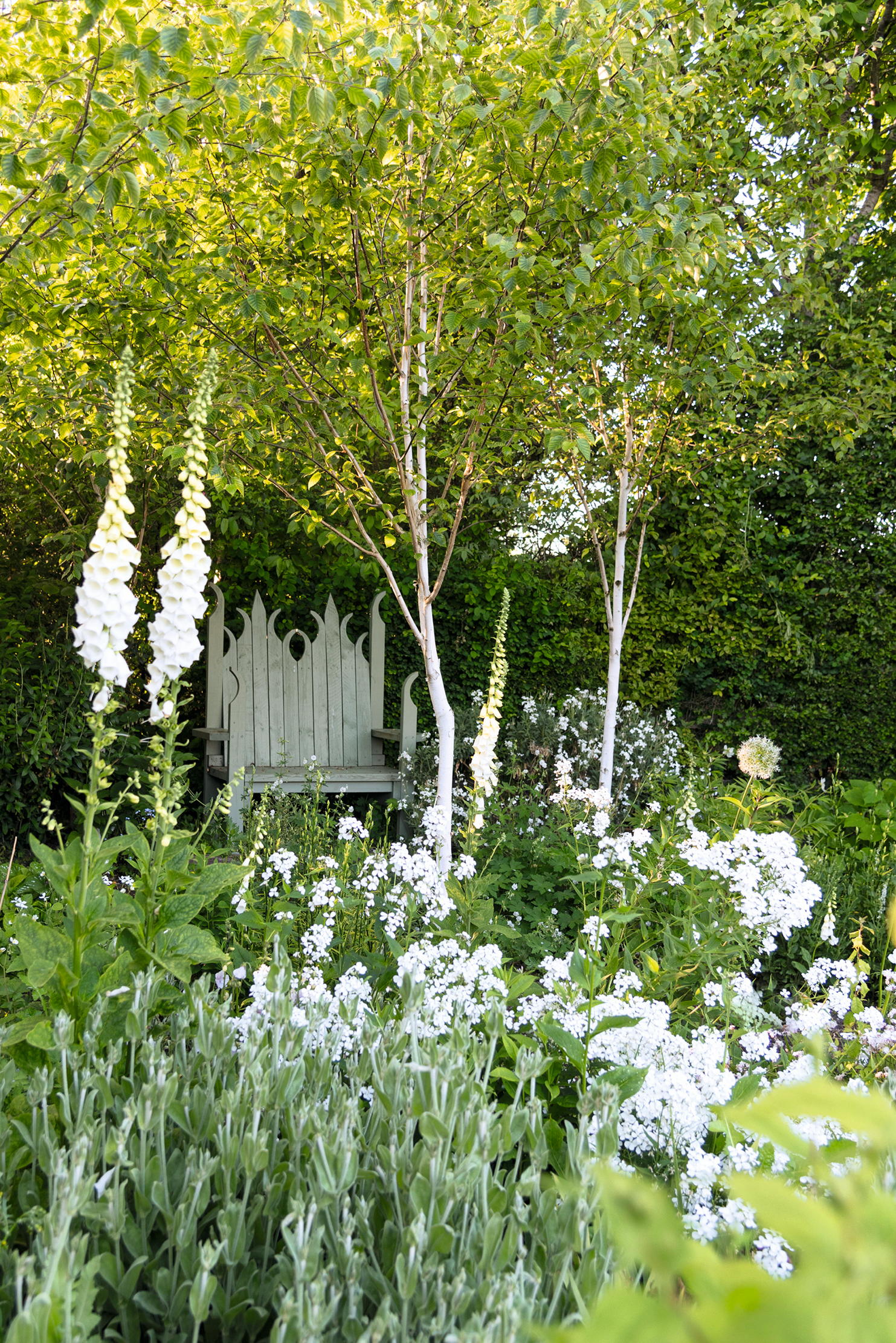
Not long after Mr and Mrs Spink moved to Midsummer House, a neighbour’s new extension blocked their view of the White Horse, but, in a stroke of serendipity, the Spinks were offered the chance to buy 14 acres of pasture across the lane from their house. This offered both a new vantage point and an expansive natural landscape to complement the jewel-like garden. This is now hay meadow with a perimeter path separated by a hedge of mixed native trees and shrubs. In all, Mrs Spink has planted 100 trees: there is a collection of oaks, which her husband loved, and a small plantation at the north end close to a recently dug pond will mature into Anthony’s Wood. Wildflowers are spreading along the path, with its views of White Horse Hill, and orchids will follow.
Writing about a garden created by old friends is a rare treat. Mrs Spink’s garden is an ode to her husband, with whom it was conceived, and it is heartwarmingly personal in other ways; the stone trough came from her mother’s garden and the sundial in the parterre from Mill House. Many of the climbing roses that clothe the house and garden buildings are ones they had at Mill House and favourite plants have come from green-fingered friends, in particular, Anthony’s brother Bill (who also had the ‘gardening gene’) from his nursery in Lincolnshire. It is a modest masterclass in creating different small-scale environments for adventurous plant associations and in merging the intimate domesticity of a garden with an uplifting wider landscape.
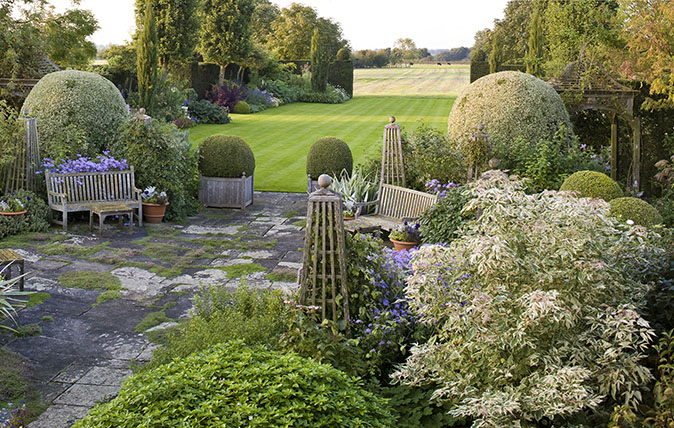
Rofford Manor: A derelict house and garden transformed into a harmonious haven
George Plumptre is won over by a sympathetic and highly individual design that gradually reveals its string of secrets.
Little Mynthurst Farm: A rare mid-20th-century garden designed by Russell Page
George Plumptre enjoys the grounds of a Tudor farmhouse that was the former home of Lord Baden-Powell. Photographs by Clive
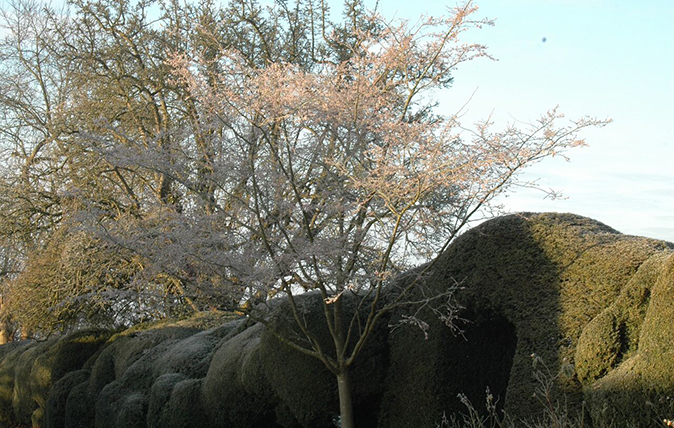
Knowle Hill Farm, Kent: The hilltop garden to enjoy winter and early-spring flowers
A windy hilltop was no deterrent to the owners in creating a garden with a special focus on winter and

Sandhill Farm House, Petersfield: An educational masterpiece from the founder of the English Gardening School
As one might expect, Rosemary Alexander’s garden is packed with the lessons learned from a lifetime in horticulture, says Tilly

Weirs Barn: A Hampshire garden where Robert Weir Schultz's Arts-and-Crafts vision came back to life
In the spirit of its founding fathers, the Arts-and-Crafts design of Weirs Barn, Hartley Wintney, Hampshire, has been brilliantly brought
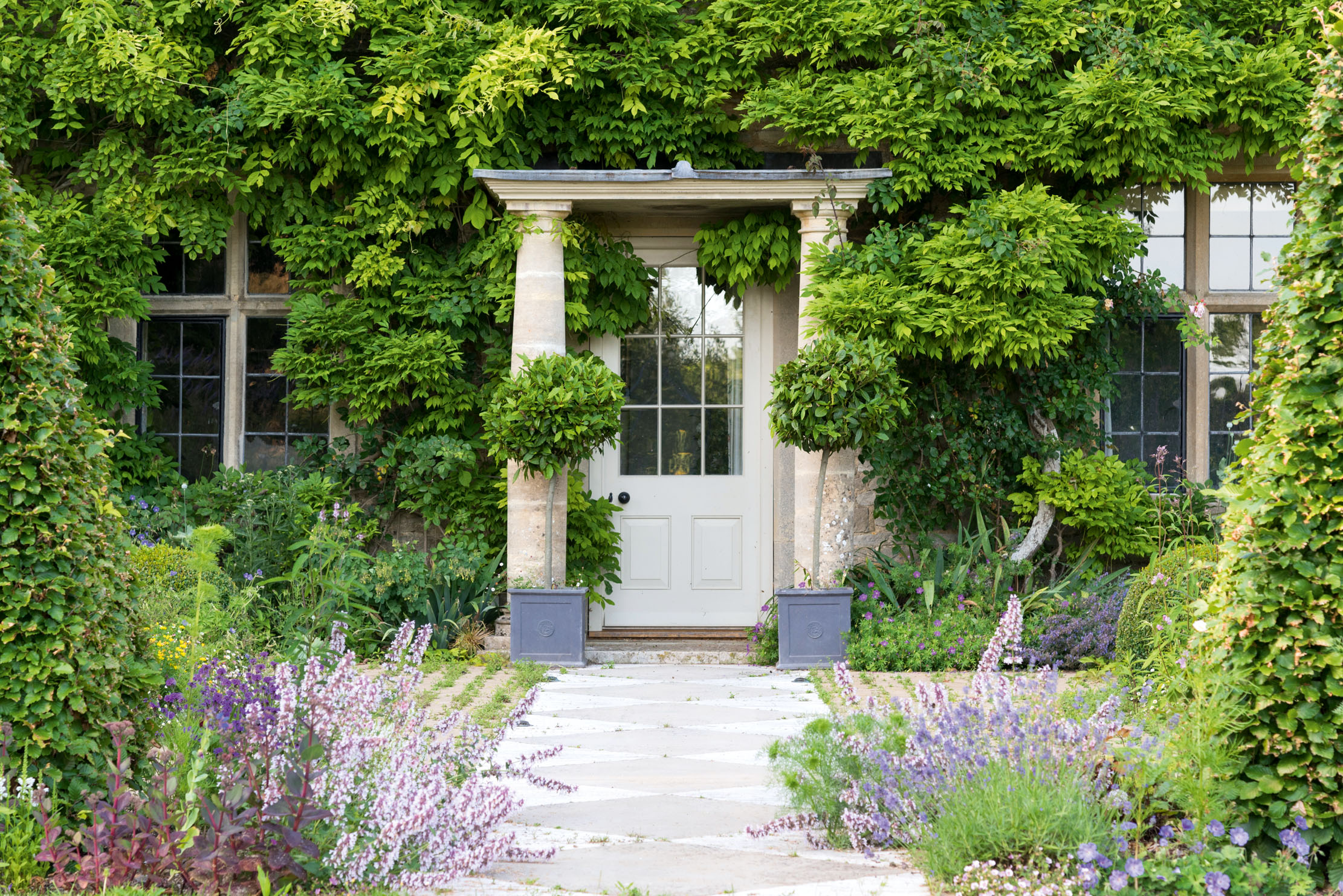
The gardens at Ready Token, Gloucestershire: The new, gentler blueprint for rewilding that's yielding spectacular results
Retaining the Arts-and-Crafts elements of a 1920s garden, the owners have added a sympathetic new terrace, as well as returning
-
 Two quick and easy seasonal asparagus recipes to try this Easter Weekend
Two quick and easy seasonal asparagus recipes to try this Easter WeekendAsparagus has royal roots — it was once a favourite of Madame de Pompadour.
By Melanie Johnson
-
 Sip tea and laugh at your neighbours in this seaside Norfolk home with a watchtower
Sip tea and laugh at your neighbours in this seaside Norfolk home with a watchtowerOn Cliff Hill in Gorleston, one home is taller than all the others. It could be yours.
By James Fisher